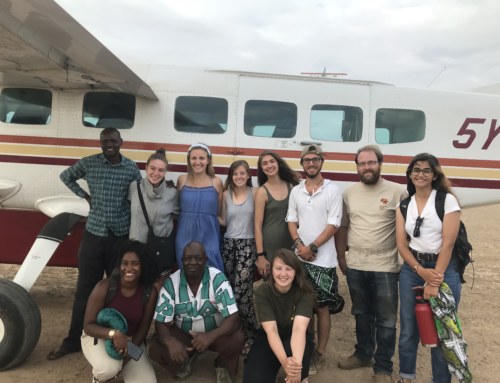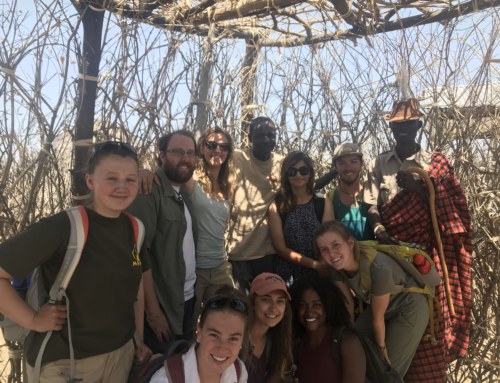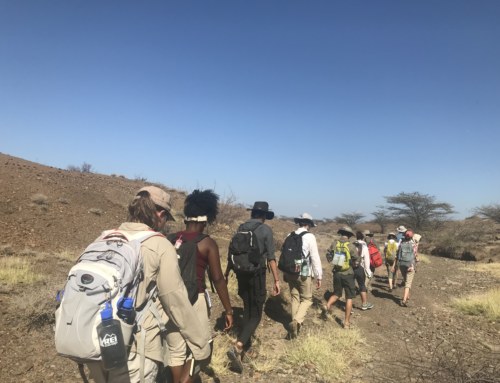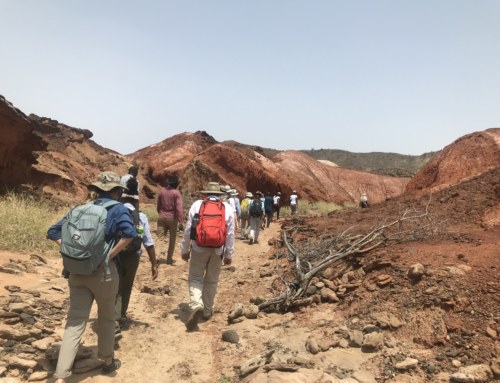Karibuni!
Welcome to the TBI Summer Field School 2018! My name is Lucia Nadal and I am the Resident Academic Director of this year’s program. Together with the Summer Field School Director, Dr. Jason Lewis and our TA Lydia Myers, I’ll be accompanying the students throughout this program. Our three-module six-week field school will take us though a journey back in time, where we will learn how to read and interpret the stories left behind by our ancestors, while writing our own and creating some memories that will last a lifetime.
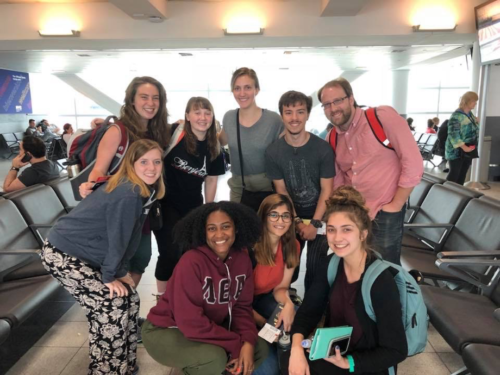
The group waiting to board their flight at JFK (Photo credit: Lydia Myers)
After arriving at Jomo Kenyatta International Airport, the Summer Field School crew made its way through the famous Nairobian traffic to the Wildebeest Eco Camp, where we got a chance to catch our breath before driving to MPALA the next morning. Our drive the next day took us past some of the many wonderful and complex faces of Kenya. We made our way through goats and cows, that quickly turned into zebras and elephants, and to top up our drive we stopped at the Equator Line for a demonstration of the Coriolis effect.
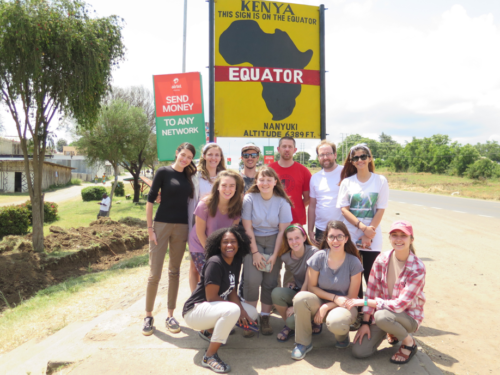
Our group at the Equator
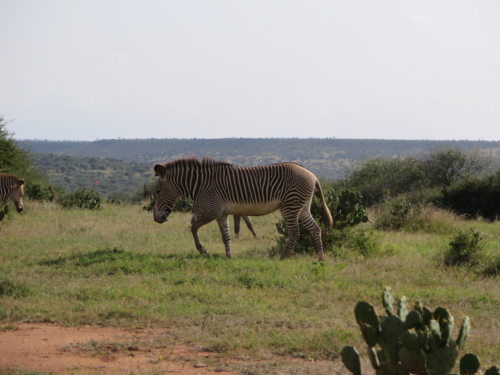
An endangered Grevy’s zebra (Photo credit: Lucia Muzzarelli)
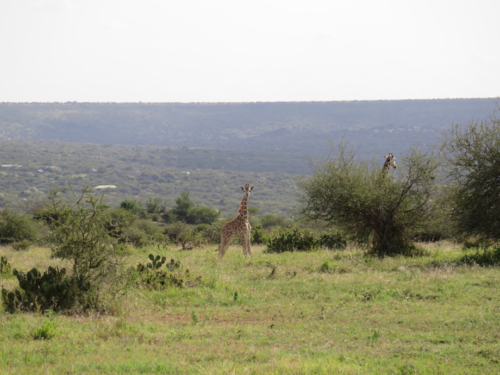
Reticulated giraffes (Photo credit: Lucia Muzzarelli)
Located on the West side of the imposing Mt. Kenya, MPALA is the starting point of our journey. This research center, focused on science, education and outreach, will give us the opportunity to learn first hand from researchers about evolution and ecology in the African savanna, a crucial first chapter to understanding the context in which the story of our species unfolded.
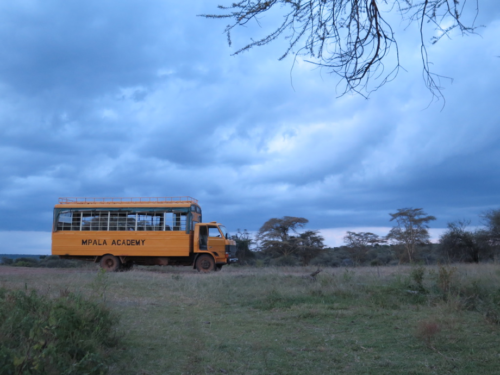
One of our sweet rides at Mpala (Photo credit: Lydia Myers)
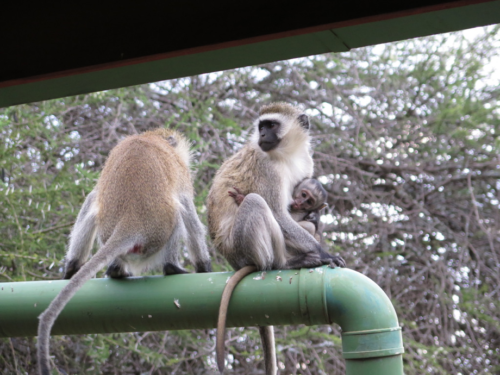
Vervet monkeys at Mpala (Photo credit: Lucia Muzzarelli)
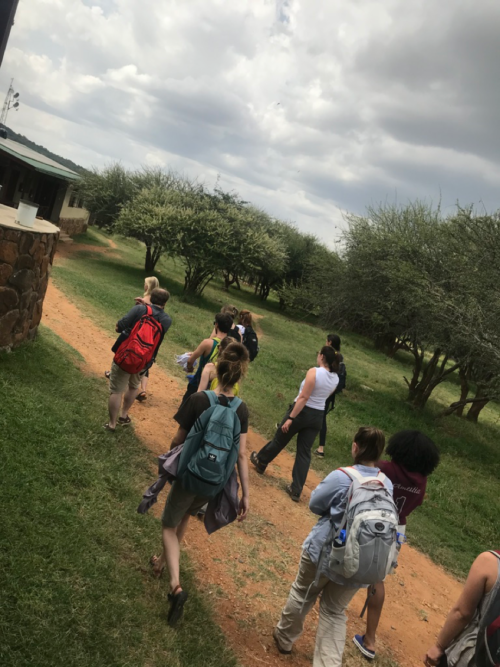
Students being led on a tour of the Mpala campus by Princeton in Africa fellow Zoe Sims (Photo credit: Lydia Myers)
We spent our first day learning about wildlife loss and land use change, while helping researcher Elisabeth Forbes take soil samples to understand how these processes are shaping the environment. On our second day we got to learn from researcher Kimani Ndung’u about the complexities of vegetation patterns and how different factors affect the landscape. Our free time at MPALA has been spent going out on game drives, where we’ve gotten to see some of the wonderful wildlife that Kenya has to offer, while our nights have been full of star gazing and story sharing around the bonfire.
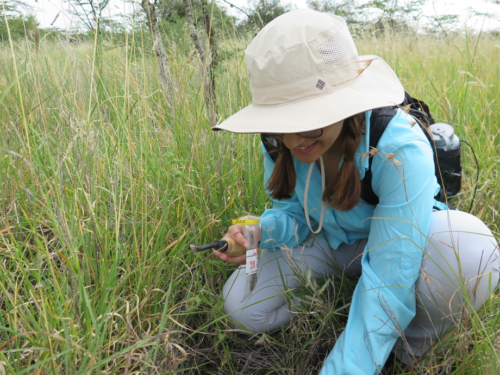
Samar taking a soil sample (Photo credit: Lucia Muzzarelli)
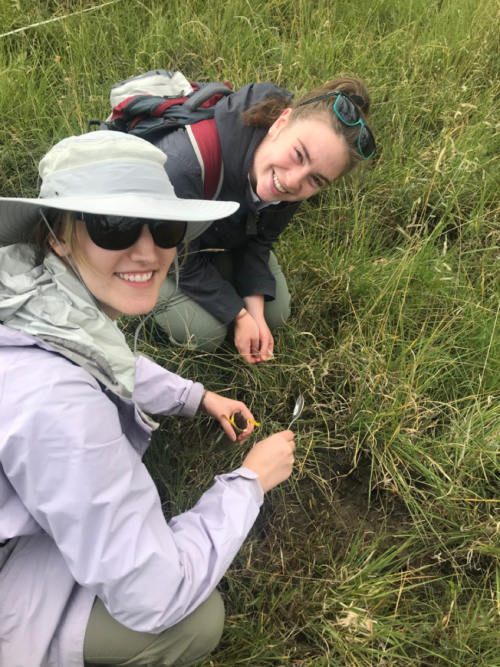
Grace and Lucia taking a soil sample (Photo credit: Lydia Myers)
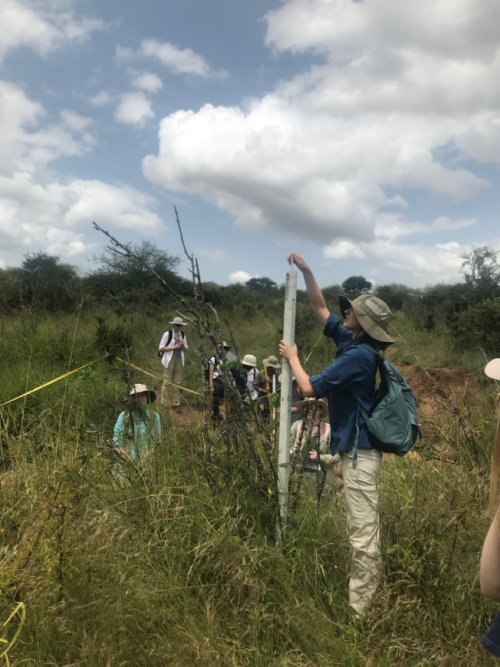
Jess measuring the height of an Acacia tree (Photo credit: Lydia Myers)
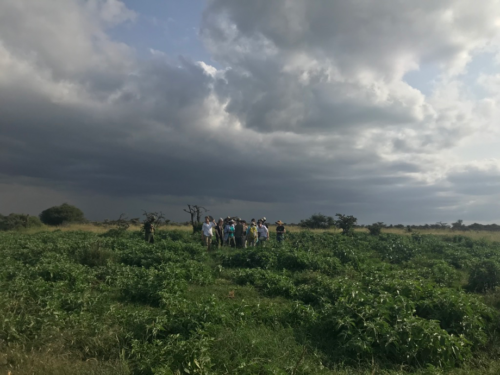
The students standing in the middle of a “Boma,” or an old cattle pen
(Photo credit: Lydia Myers)
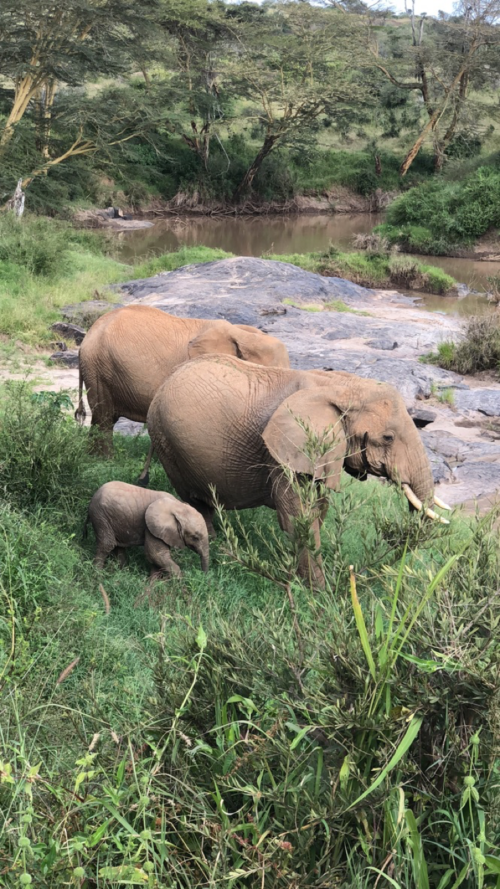
Elephants by the river close to MPALA (Photo credit: Grace Calhoun)
We are continuing the Ecology, Ecosystems and Evolution module at MPALA, then the Summer Field School will be moving to Turkwel on the West side of Lake Turkana at the end of the week, which will be our basecamp for the next chapters of this journey.
Stay tuned for more updates on our story!

